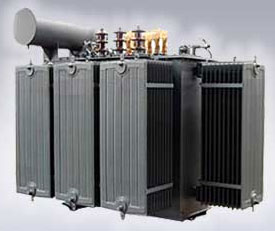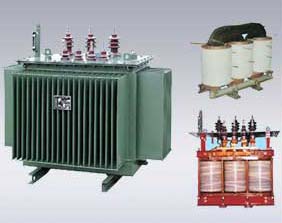
|
||||
Industrial, Substation & Distribution
Tfr. Upto 10 MVA, Upto 33kV, ONAN A poly phase Distribution Transformers
design is presented in which transformer output pores are accurately
constructed in both voltage magnitude and relative phase angle. The
design incorporates both main and auxiliary transformers that are used
in unison to produce the accurately constructed phases. The main
transformer permits rough phase adjustment to be made with the auxiliary
transform permitting phase fine tuning. Such a design is particularly
suitable in transformer approaches that require output phases that are
of a number not evenly divisible by three. The main transformer permits
rough phase adjustment to be made with the auxiliary transform
permitting phase fine tuning. Such a design is particularly suitable in
transformer approaches that require output phases that are of a number
not evenly divisible by three. |
||||
A distribution transformer is
a transformer that provides the final voltage transformation in
the electric power distribution system, stepping down the voltage used
in the distribution lines to the level used by the customer. The
invention of a practical efficient transformer made AC power
distribution feasible; a system using distribution transformers was
demonstrated as early as 1882.
Distribution transformers are normally located at a service drop,
where wires run from a utility pole or underground power lines to a
customer's premises. They are often used for the power supply of
facilities outside settlements, such as isolated houses, farmyards
or pumping stations at voltages below 30 kV. Another application is
the power supply of the overhead wire of railways electrified with
AC. In this case single phase distribution transformers are used. |
||||
| Home - About Us - Quality - Products - Exports - Clients - Contact Us - Feedback - Sitemap- DealerList |
| Designed & Hosted by : MID Promoted by : GID |



 1
1 2
2 3
3
